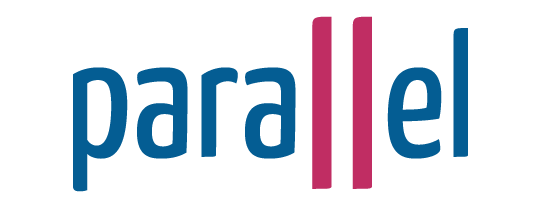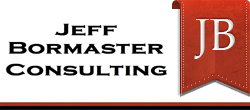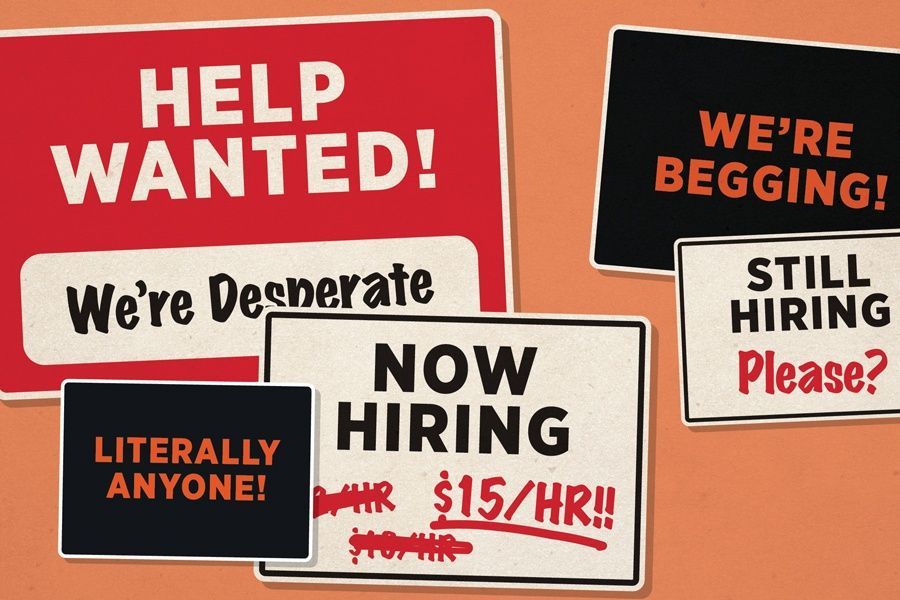Why New Evidence Based Practices (Products) Don’t Improve Outcome Performance in Human Services Organizations and What Research Tells Us Will

November 2022
Human services organizations are organizations that deliver services through its people as opposed to a factory that delivers its product through goods.
Human services organizations include government services such as child welfare, juvenile justice, and education. They include nonprofits and for-profit organizations that deliver services to clients.
What these all organizations have in common is a desire to improve their performance. For the past 40 years what the leaders of these organizations have done is buy new products. These products include curriculum – if we use this curriculum instead of that curriculum…. If we use this case management electronic record instead of that… if we use this behavior management package rather than that one… etc.
The underlying belief is if we just buy the right package our organizational outcomes performance will improve on a long-term basis.
What we have experienced is that is a false belief.
Peter Drucker tells us in Management Challenges for the 21st Century:
The conditions required for productivity in the twentieth-century industrial economy, which revolved around manual workers, were completely different from the conditions required for productivity in the twenty-first century knowledge economy, which revolves around knowledge workers.
Manual worker productivity requires supervisors/managers tell the workers exactly how to do their jobs, but knowledge worker productivity requires supervisors/managers provide workers with clear goals and autonomy. Knowledge worker productivity is more about attitude of the knowledge worker.
Workers that are told exactly what to do stay incompetent. They become passive and apathetic because they have no ownership.
David Kearns, who served as President Bush’s US Deputy Secretary of Education, reported that in the early 1990s he and the Bush Administration invested over one hundred million dollars in researching excellent schools and effective curricula. They packaged their various school designs into products – even giving them names and logos. They pitched their products and created training programs and extensive support systems. They sought to replicate these effective school’s success. In the end, after disseminating all the best practices reinforced by quality control systems, after all the time, money and effort, Kearns reports they were unable to achieve their goal of replicating successful schools. They had approached education as a product that could be replicated – and they had treated teachers like manual workers instead of as knowledge workers. He learned education is not about developing products. It is about developing people.
You hire people you trust completely to do the job. Then you create a culture that enables them to do their best work. That’s it. Your job is to praise and support your people and take away roadblocks so they can do their job successfully.
Today leaders are still using the “product” approach to improving outcomes.
In Child Welfare the Adoptions and Safe Families Act identified outcomes that states must achieve to retain their federal funding of child welfare. When states do not meet these outcomes, they are required to develop a PIP, Performance Improvement Plan, outlining how they will change practice to achieve the improved outcomes. Most states have used a “product” approach to improving outcomes. They have bought new electronic systems, purchased products such as “ARS: Alternative Response Systems” and “FGDM: Family group Decision Making” thinking that product will improve outcome performance on a sustained basis.
There have been two rounds of reviews of states and in both rounds all states failed to meet all outcomes and many reported short-term outcome improvements, but none reported long term outcome improvement.
What the studies tell us, it is not about what product you use but how you treat your employees.
The following are just four of the hundreds of studies that explain the link between how organizations treat (supervise) their employees and outcome performance.
Gretchen Speitzer and Christine Porath, Creating Sustainable Performance, HBR, January-February 2012, page 92
What makes for sustainable individual and organizational performance? Employees who are thriving – not just satisfied and productive but also engaged in creating the future.
The authors found that people who fit this description demonstrated 16% better overall performance, 125% less burnout, 32% more commitment to the organization and 46% more job satisfaction than their peers.
Thriving has two components: vitality, or the sense of being alive and excited and learning or the growth that comes from learning knowledge and skills. Some people naturally build vitality and learning into their jobs, but most employees are influenced by their work environment.
Four mechanisms, none of which requires heroic effort or major resources create the conditions for thriving: providing decision making discretion, sharing information about the organization and its strategy (organizational transparency),
Minimizing incivility and offering ongoing performance feedback. Helping people grow and remain energized at work boosts performance in a sustainable way.
Leadership Challenge, Kouzes & Posner
Based on the 25 years of leadership research done with thousands of public, non-profit and for-profit organizations involving thousands of organizations, leaders, and followers. Currently in its 4th edition. With each edition the authors have re-validated their initial findings are still accurate.
Their research found two core beliefs:
- Everyone wants to succeed in the work world – to achieve extraordinary things (results)
- The supervisor as leader’s job is to help this happen. We achieve extraordinary results thru our followers not on our own
They identified five practices all leaders in all segments shared when they were at their “personal best”
- Modeled the behavior they wanted from other
- Inspired a shared vision
- Sought to grow and change and help other to also
- Enabled others to succeed
- Cared about others; gave recognition for success/ celebrated small victories
Leadership is a relationship between those that aspire to lead and those that choose to follow. This relationship is characterized by mutual respect and confidence that we can achieve extra ordinary results.
As a supervisor your direct reports see you as their most important leader. You have the greatest influence over whether they stay or leave, achieve/excel or just get by, love or hate coming to work, are willing to go the extra mile. Through humility and the behaviors that leaders can learn and practice you can lead your team to achieve extraordinary things/ results.
Recent reports tell us the problems we are facing in child welfare and education are universal not unique to our field.
Gallup’s 2022 State of the Global Workplace Report August 2022
According to Gallup’s 2022 State of the Global Workplace Report, 60% of respondents said they were emotionally detached at work and 19% reported being “actively disengaged.” It’s no wonder that 4.2 million Americans called it quits every single month from February to June, according to the latest data from the Bureau of Labor Statistics, with the number of unfilled U.S. jobs reaching 10.1 million at the end of that period.
How goes the Great Reshuffle?
By Cate Chapman, Editor at LinkedIn News 8.24.2022, New York Times 8.22.2022
More than 40 million Americans left their jobs last year, as the pandemic and its dislocations caused them to reassess work and life. The New York Times interviewed a group of readers who joined the Great Reshuffle, some because they wanted to pursue a dream in a more affordable locale, others because they wanted to slow down. Few had any regrets. Ian Karle, who took a big pay cut when he left the Texas oil and gas industry to become a chocolatier in Montana, says "It’s ridiculous how much happier I am here."
Businesses and industry have spent decades and lots of money assessing and determining what will make a difference in organizational success.
Gallup, a leading for-profit consulting firm has been studying workforce recruitment and retention and in the latest report confirms what needs to happen in our sector.
Gallup 2022 Guide to Employee Engagement: Five Elements of Success
Note: Italics have been added by me
1. Measure engagement
Survey your employees using credible, comprehensive questions. Measuring the elements of engagement that are most critical
Only if the tool actually measures engagement and that you are going to use the results to make a written plan for improving engagement and then implement and report periodic success to staff, then remeasure.
Use a 3rd external party to conduct the assessment. Staff in organizations do not trust management or HR to not retaliate if they get feedback they don’t like. You need to maximize employees feeling of safety by only providing management with consolidated results without access to what any employee submitted.
2. Have growth-oriented conversations
Bring your survey findings to life through genuine conversations. The only way to meet employees’ needs is through conversations that actively work to address those needs
Teach all supervisors how to have growth focused conversations. This is an ongoing process not an annual post performance review training plan.
3. Provide clear ongoing communications
Confusing messaging from leaders only makes supervisors’ lives more stressful. In times of disruption, the most basic needs are at risk — clear expectations, the right resources and opportunities to do what each person does best.
Teach all supervisors a common language focused on behavior so there are agency-wide consistent clear communications.
Get rid of things like “other duties as assigned” on job descriptions. Stop using phrases like “subject to disciplinary action up to and including termination”. Clean up language in employee handbooks and job descriptions.
4. Focus on Well-being
Employees, managers, and supervisors all need to feel they are continuously developing in their work and overall lives. As work and life are now more blended than ever, it is critical that organizations address and manage employee engagement along with the five elements of wellbeing — career, social, financial, physical and community — to reduce the odds of burnout, stress, worry, anxiety, and depression.
Organizations can improve the overall lives of their managers and employees with the right coaching conversations about individual strengths, work, and wellbeing.
As part of an engagement survey include questions about employee well-being, including work-life balance. Include in your agency’ strategic plan to enhance the well-being of employees.
5. Have strengths-based conversations
You can help make supervisors’ jobs easier by teaching them to have higher-quality conversations — ones that occur frequently and that focus on employees’ strengths.
Every employee has different strengths and different work and life situations. Supervisors know each employee well, which makes them the best person to adjust their employees’ workflows, motivate high performance and direct them to the right wellbeing resources to meet their individual needs.
To do this, think about the members of your team. What are the things that they do best every day? Where do you see them succeeding, repeatedly? And finally, how can you ensure they do more of that? These questions help generate strengths-based conversations.
Teach all supervisors to supervise for success and require all supervisors to operate in this model focused on behaviors for success in their job so there is agency-wide consistent practice. It is as important to staff to feel they are all being equitably treated in a same consistent manner as it is for youth in care.
Public and private agencies can choose to hang on tightly to the status quo and then they will still face the same problem tomorrow as they have today – lack of a fully staffed competent workforce
OR
Public and private agencies can choose to change practice…
· Strategically planning to be a successful agency
· Becoming an employer of choice
· Improving employee engagement & well-being
· Proving success-focused management/supervision
When you are ready to move from the status quo, contact me.
The future for your agency is in your hands and you must make the decision that you are willing to move from the status quo for the sake of our children’s future.
Why does it matter?
Because the long-standing practices put in place and used by Baby Boomers for decades now results in a workplace and a workforce that is:
- Not fully engaged
- Not committed long-term resulting in increasing turnover
- That does not trust their “bosses,” meaning their immediate supervisors as well as senior leadership.
- That is not achieving sustained results (outcomes)
What I have heard from my baby boomer peers is this incoming young staff just needs to “get used to the way things are.”
If we, the organizational leaders, want to maximize our organizational performance, then we need to understand what the workforce studies say to us and translate those studies into practice.
Senior leaders need to recognize that our traditional approaches are not working with our younger work force and that we, the senior leaders, need to begin to change long-standing organizational practices that alienate employees, especially those on the front line working with our clients.
From the most senior leader to first line supervisor, we need to be modeling the behavior we want those we supervise to use. What studies tell us is we need to be success focused.
What does this mean?
It means changing existing practices including:
- Teaching supervisors how to do success focused supervision
- Provide clear expectations through success focused job descriptions, clear practice guides and employee handbook
- Require regular supervision of all employees as per an equitable supervision policy and document
- Providing performance reviews using frequency of success behavior
- Reward success
Practice includes:
- How to Hire Right: Generations X, Y and Z
- How to do Success focused Supervision
- How to Organizational Support a Success Focused Orientation
- Aligning job descriptions and your employee handbook with what Gen X, Y and Z want.
- Institutionally addressing post-Covid secondary trauma and doing trauma preventing as an organization
- Fitting programming to meet client needs not fitting client into your program.
- Strategic planning for the new reality
- Staff retention – it saves you money!
LEADING FROM OUTSIDE THE BOX is a monthly newsletter for human services leaders.
Its purpose is to challenge your thinking and help you improve organizational and outcome performance.
To receive your copy free, simply email Jeff Bormaster and ask to be added to the mailing list. Feel free to share these newsletters with other human services leaders, simply include the contact information.
You can read previous issues of Leading Outside the Box at www.jeffbormasterconsulting.com/topics










